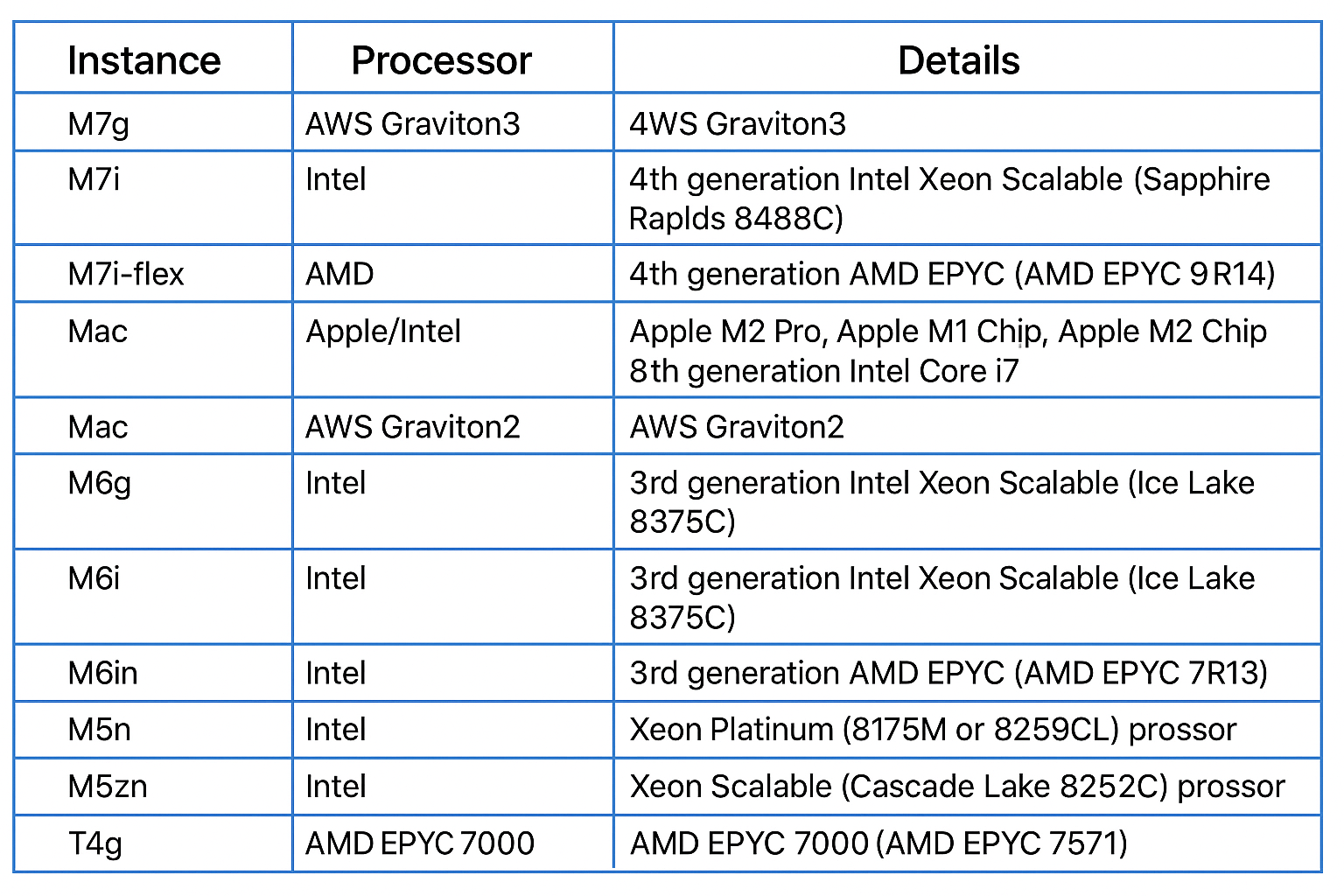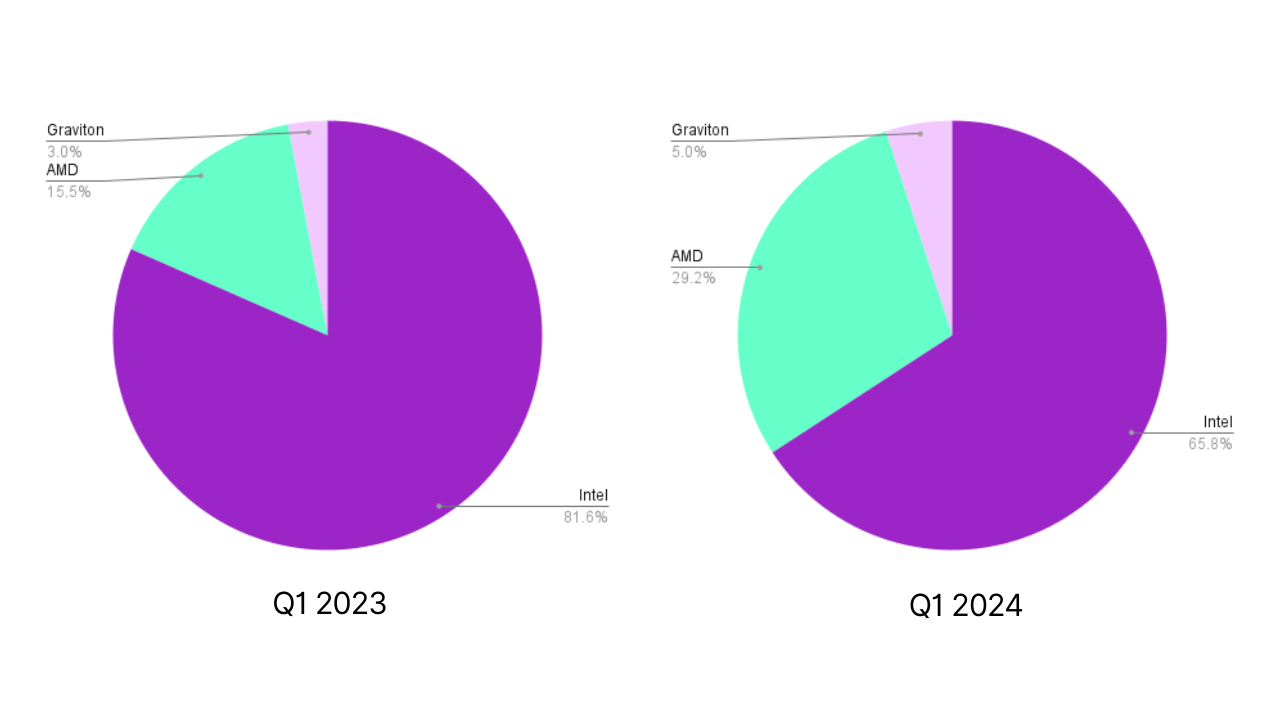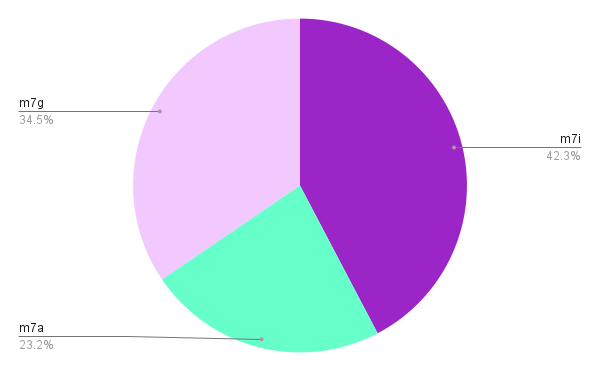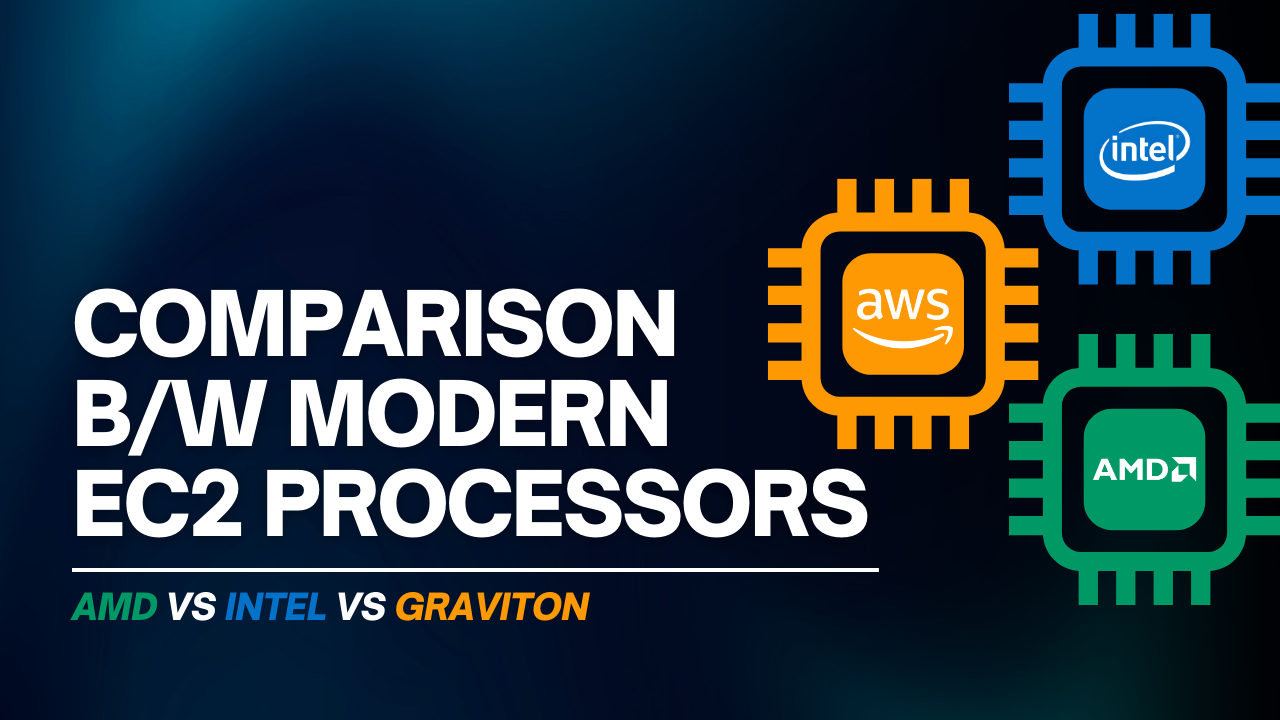If you've been using AWS for a while, you probably remember when EC2 instances only came with Intel processors. Those days are long gone! Today, you have three processor options to choose from: Intel, AMD, and AWS's own Graviton. Each comes with its own advantages and trade-offs that might make it perfect (or not so perfect) for your specific workloads.
Let's dive into the history, differences, and current usage trends of these processor options to help you make better decisions for your cloud infrastructure.
History of EC2 processors
Back in 2006, AWS launched its first EC2 instance type - the humble m1.small with just 1 vCPU and 1.7 GiB of memory. For many years after that, Intel was the only processor option available for EC2 instances.
The processor landscape didn't change until 2018, which brought two major developments. That year, AMD-powered instances arrived with the release of 1st generation AMD EPYC processors. In the same year, AWS released its own custom processor called Graviton, promising up to 40% better price performance for certain workloads.
Even with these new options, Intel still dominates the EC2 ecosystem, though AMD and Graviton adoption has been steadily growing over the past few years.
Differences between processors
When choosing between processor types, you'll need to consider several important factors:
CPU architecture
Intel and AMD both use x86-based architecture, which is the standard for most desktop and server computers. Graviton, however, uses 64-bit Arm Neoverse cores.
This architectural difference matters because some software might not be compatible with Arm-based processors or might require significant refactoring. In the past, one big concern with Graviton was vendor lock-in since Arm wasn't widely supported by other cloud providers. That's changed recently, though - both Azure and Google Cloud now offer Arm processor options.
Threading capabilities
Intel and AMD support simultaneous multithreading, which allows multiple threads to run at the same time on a single CPU core. Graviton doesn't support this - each vCPU is a dedicated physical core.
This difference can impact performance depending on your workload. Data analytics tasks often perform better with multithreaded workloads. Meanwhile, gaming and certain other applications may work better on single-threaded workloads.
(Note that you can disable multithreading by setting one thread per core if needed.)
Price performance
AWS advertises that Graviton instances can deliver up to 40% better price performance compared to similar Intel and AMD instances. Independent benchmarks generally support this claim.
Graviton's cost advantage comes from two main factors. First, Arm-based processors typically consume less power. Second, as AWS owns Graviton, they can offer more competitive pricing margins.
If cost optimization is your primary concern, Graviton instances are definitely worth considering.
Raw performance
Performance comparisons between processor types vary widely depending on specific use cases. Benchmarks show different results for different workloads.
My practical advice? Run your actual workload on different instance types and measure the performance yourself. That's the only way to know for sure which processor will work best for your specific needs.
Keep in mind that AWS regularly introduces new instance types with improved processors, so the landscape is always evolving.
EC2 instance types by processor
EC2 instance names sometimes tell you which processor they use - for example, M7g uses Graviton (the "g" suffix). But many instances don't make it obvious, so here's a breakdown of current EC2 instances and their processors:

There are about three times as many families with Intel processors than with AMD or Graviton. This comprehensive table shows just how extensively AWS has implemented different processor options across their instance families.
Processor usage
So how are companies actually using these different processor options? According to data from Vantage (a cloud cost optimization platform), we can see some interesting trends in EC2 processor usage.

EC2 instances processor distribution
(Image Source: Vantage)
The share of AMD and Graviton has nearly doubled in just one year! But there's more to the story. Intel still has way more instance types available. Also, the pricing is very different - the most expensive Graviton instance costs about $5.82 per hour, while AMD goes up to $98.32 and Intel can cost as much as $218.40.
When we look at just the newest M7 family of instances, the split is much more even:

EC2 M7 instances processor distribution, Q1 2024
(Image Source: Vantage)
This shows that when customers have all three options available in the same generation, they're actually choosing based on what works best for their specific needs.
Conclusion
Intel is still the most used processor for EC2, but more customers are now choosing AMD and Graviton options. EC2 is typically the biggest cost on AWS bills, so your processor choice can significantly impact your cloud spending. When picking an instance type, think about software compatibility, threading needs, and price-performance tradeoffs. You might also need to consider if you're willing to modify code for Graviton's Arm architecture. The best approach is to test your specific workloads on different instance types to find the best balance of performance and cost for your needs. As AWS continues to develop EC2, we'll likely see more processor innovations worth watching.



